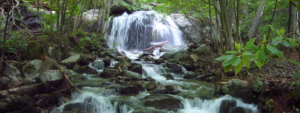Sportsmen and sportswomen must play a role in the effort to conserve 30 percent of the world’s lands and waters by 2030—here’s what 30 by 30 is (and what it isn’t)
Almost immediately after the inauguration, the Biden Administration announced its support for a global conservation initiative known as 30 by 30—the goal of conserving 30 percent of the planet’s lands and waters by 2030.
News about the initiative spread fast across several media outlets and has left many, including sportsmen and sportswomen, wondering what this effort is and where it is headed. Words like “protection” or “designation,” often strike fear among landowners, politicians, industry executives, and even some conservation groups. Especially when used with broad strokes that allow people’s imaginations to wander and reach sweeping conclusions. Predictably, many immediately criticized the 30 by 30 initiative and expressed fear of classic top-down federal restrictions.
This doesn’t have to be the case. The administration’s directives specifically call for “conserving” 30 percent of our lands and water, not “protecting” them. What’s the difference? As Theodore Roosevelt and others have noted for more than a century, humans are a part of the land and can wisely use that land, conserving it and nature for future generations. Moreover, the Biden order calls for a deliberative stakeholder process to determine what will be considered “conserved.” This is good news for our community as it provides us with an opportunity to help shape 30 by 30.
Based on the administration’s messaging and direction thus far, it appears that more than just wilderness, national monuments, and national parks would be part of what we consider conserved habitats. It will also include working lands that are managed for long-term ecological sustainability. Because sportsmen and women depend on functional habitats for our pastimes, we have an historic opportunity to turn this initiative into a real win-win for fish and wildlife, landowners, our changing climate, outdoor recreation, and our economy.

30 by 30 is a laudable goal that could benefit our community greatly if implemented successfully. Here’s what you as hunters and anglers need to know to push for conservation goals as part of this initiative.
30 by 30 is supported by scientists.
The Biden Administration didn’t come up with 30 by 30. Scientists have championed the initiative for years to conserve biodiversity and mitigate the impacts of climate change. The hunting and fishing community has been on the front lines of conservation for more than a century and we know that science-based conservation for game species also benefits ecosystem health, biodiversity, and local communities. Efforts to mitigate climate change through proven natural solutions will also benefit biodiversity, habitat, and the hunting and fishing community while contributing to 30 by 30 goals.
Conservation must be clearly defined.
This is critical to understanding what, where, and how lands managed specifically for conservation—under public and private ownership and beyond just permanently protected areas—are contributing to the broader goals of 30 by 30. Our community believes that contributions from long-term or permanent easements on private lands, Conservation Reserve Program enrollments, and other conservation measures can and should be rolled into the initiative.
If conserving biodiversity is also a goal, I would argue that well-managed national forests should be considered “conserved.” Prudent timber harvest can help reduce wildfire and provide critical habitat diversity.
We need to know where we stand in relation to the goal.
The U.S. Geological Survey estimates that 12 percent of the country’s lands are already permanently protected, and studies show about 26 percent of U.S. ocean waters, mostly in the Pacific, are currently protected. How to achieve the remaining 18 percent of land needs to be defined. While we don’t have an acreage total for lands that would be considered “conserved,” meeting the 30 by 30 target will require an additional area twice the size of Texas—that’s more than 440 million acres—within the next 10 years.
Hunters and anglers need a seat at the table.
As always, science-based conservation measures should be developed through a stakeholder-driven process that includes sportsmen and women, private landowners, states, tribes, industry, and others. If it is to succeed, this will be critical in defining the goals and definitions for habitats to include for 30 by 30.
Moreover, access, including hunting, fishing and general recreation, should be encouraged as long as it is well managed. Conservation requires public support, and we help achieve that by letting people enjoy conserved areas. The TRCP has joined with other hunting and fishing organizations to ensure our community has a seat at the table and that the initiative recognizes the important role of sportsmen and sportswomen in powering conservation in the U.S.
Community-driven conservation is key.
We will need our local communities, both urban and rural, to be fully invested in the broad conservation outcomes envisioned by the 30 by 30 initiative. With the challenges of a changing climate, fire, invasive species, and other stressors affecting our fish and wildlife habitat and natural systems in the U.S., conservation approaches are most durable and lasting when they are well-grounded in local communities and in building trust and common ground with local decision-makers. This is also an opportunity to ensure we are building toward conservation outcomes that create equitable access to nature, clean water, and recreation.
Freshwater needs to be included.
Connectivity is fundamental to improving biodiversity and should be of paramount importance when considering which lands, waters, and conservation actions will contribute to 30 by 30 goals. Freshwater connectivity, and the critical role freshwater plays within our landscape, is an important factor for the administration to consider as it develops next steps for 30 by 30.
30 by 30 should not ignore degraded habitats that need restoration.
There are millions of acres of degraded habitats across the country warranting restoration. Restored habitats will ultimately contribute to the goals of 30 by 30 over time and investments need to be made to combat invasive plants and restore ecological function to damaged ecosystems. Programs supported by sportsmen and women that have provided millions of dollars of investment into habitat restoration will need to be included in the solution set for this initiative. This includes the North American Wetlands Conservation Act, the National Fish Habitat Partnership, the Partners for Fish and Wildlife Program, and the Environmental Quality Incentive Program.
It is incumbent on our community to work with Congress, states, local governments, and all stakeholders on defining conservation that works to achieve long-term goals. Any legislation must also tie together 30 by 30 goals with ecosystem health, robust fish and wildlife populations, climate benefits, and economic stimulus—particularly through investments in job-creating conservation projects and better access to outdoor recreation.
And, importantly, implementation of the 30 by 30 initiative must not divert funding from ongoing conservation, restoration, or natural resource management activities.

Learn More
The TRCP, along with 50 other groups, has signed onto this statement from the hunting and fishing community, which outlines the 30 by 30 policies that support existing habitat management approaches and recognize hunting and fishing as important and sustainable activities. Learn more at huntfish3030.com.
Images courtesy of the U.S. Forest Service






